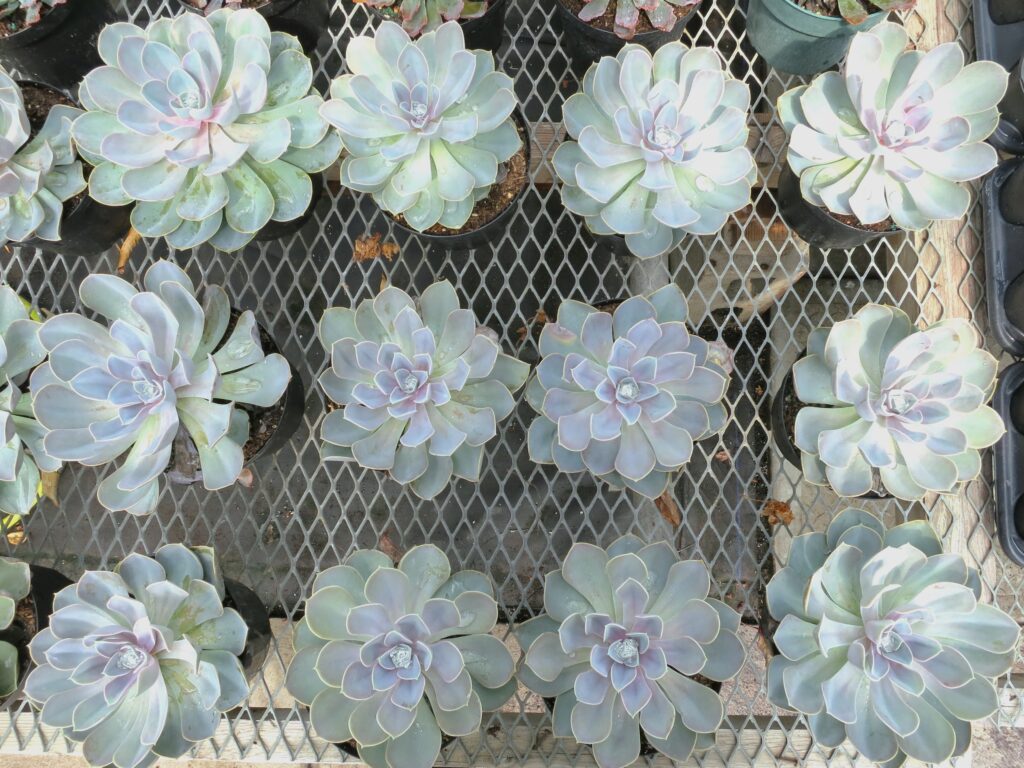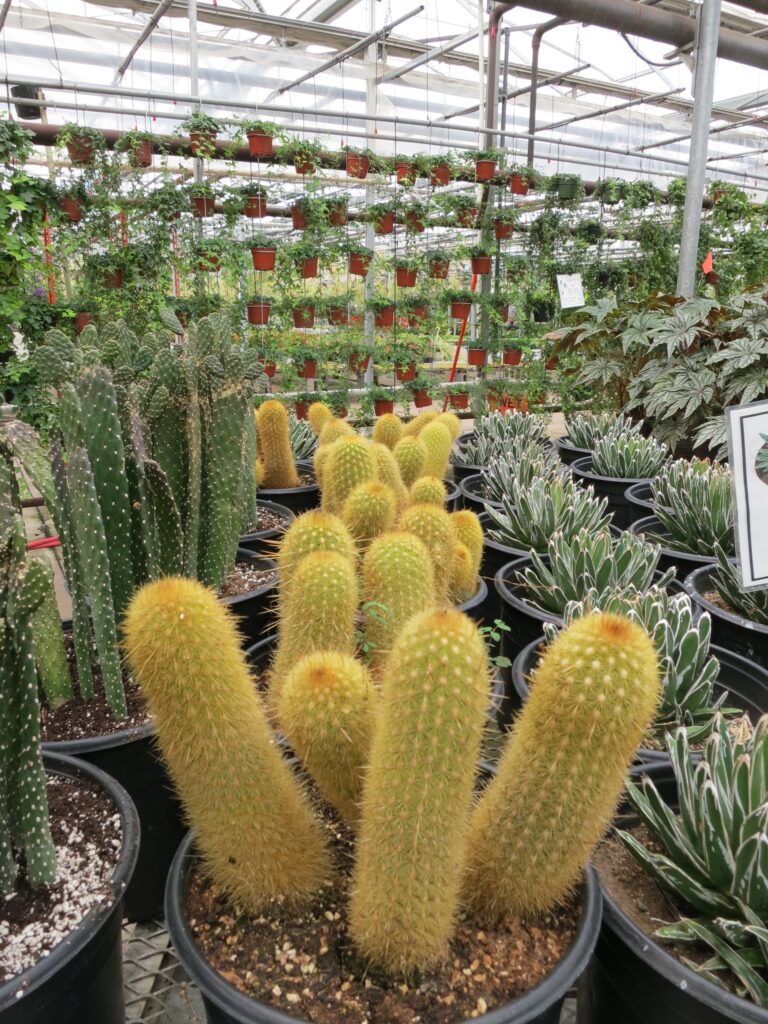Succulents 101

New to the plant world? Get a succulent! Succulents are generally pretty easy to take care of and require little maintenance, making them the perfect house plant for someone who doesn’t have a lot of plant experience. Common succulents include cactus, sanseveria (aka snake plant), jade, agave, aloe vera, echeveria, and many more. *Valleyview has a large succulent selection all year round, providing you with endless beginner-friendly options.
Watering
Because succulents are naturally found in hot and dry environments with limited water availability, they don’t need to be watered very frequently when in your home. The general rule of thumb for succulents is to water them every 3-4 weeks, but this can vary based on the conditions of your house. The best way to check if your succulents need to be watered is to feel the soil. You should allow the soil to fully dry out in between waterings.

Here are some signs that your succulent needs to be watered:
- The leaves are rubbery
- Some leaves have dried and become crispy
- The soil is bone dry and water runs through it super quickly
On the other hand, overwatering can be harmful as it can lead to root rot. Here are some signs that you have overwatered your succulent and need to leave it alone until the soil fully dries out:
- Leaf discolouration
- Weak roots and stems
- Mushy and droopy leaves
- Very wet soil
There are 3 main ways to water succulents:
- Use a watering can and water from the top, being sure to avoid getting the leaves wet
- Placing a saucer filled with water under the pot, allowing the succulent to take up the water through its roots, also known as bottom watering.
- Dunking the succulents in a container filled with water, being sure to avoid getting the leaves wet. This method is best if the succulent is still in a grower’s pot with a drainage hole.
Light
Most succulents generally grow best in bright, indirect light where they get 4-6 hours of sunlight. An example can be beside a window.


Soil and Repotting
When repotting a succulent, it is crucial that you use well-draining soil such as a succulent potting mix.
Next, when choosing a pot for your succulent, it is important that the pot isn’t more than 1-2 inches wider than the pot the plant is currently in. This is because most succulents prefer confined spaces where their roots don’t have to travel far. Succulents are slow growing plants so they only need to be repotted once you can clearly see the plant growing out of the current pot.
Another thing to be aware of when choosing a pot is whether it has a drainage hole or not. Succulents don’t like to be sitting in water, so using a pot with a drainage hole can help prevent this, but you may want to use a saucer to protect your surfaces. Alternatively, using a pot without a drainage hole is usually fine if you are careful with watering and use well-draining soil. To add extra drainage though, many people may find it helpful to put stones at the bottom of the pot, or use a mix-in such as perlite, but this is not usually necessary if following proper watering and soil recommendations.
Hopefully this article has helped you become more confident in taking care of succulents. Please note that the information in this article is very general and may not apply to all succulent plants. If you need more help with specific succulents, please don’t hesitate to ask one of our greenhouse staff members while in-store, or send an email to info@valleyviewgardens.com. We are always happy to help!